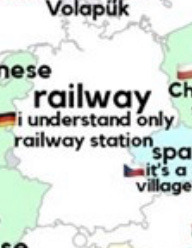Text
I unironically love that the Ides of March is some kind of unofficial tumblr holiday where we bully a dead emperor.
22K notes
·
View notes
Text

104K notes
·
View notes
Text
"left brain" "right brain" please stop excluding the rest of us who have absolutely no brain whatsoever
32K notes
·
View notes
Text
pro-whatever the fuck women wanna do with their bodies
48K notes
·
View notes
Text


wtf germany
336 notes
·
View notes
Text
Sigmund Freud would have a fucking field day with me and I live everyday happy to know this
#as an enby aroace#i sincerely hope i'd give him a stroke or something#but he'd most likely just put the diagnosis of a shitton of mental disorders on me
28 notes
·
View notes
Text
hey. what do a selkie and a ziploc bag have in common
154K notes
·
View notes
Text
reminder to any adults following me: dont forget to pay that bill
reminder to young adults following me: dont forget to drink water and take your medication if you have it
reminder to kids following me: dont forget to feed your dog and dont take your time for granted
reminder to babies following me: learn to read bitch
148K notes
·
View notes
Note
Hey! I saw your post about how hiveminds are represented poorly, where you then talked about how anarchists form a consensus among large groups. I was wondering how this process of forming a consensus typically works, because I always thought people did have a vote.
Most anarchist communities don’t vote. Because whenever we vote, a majority gets what they want and a minority doesn’t. And this could mean there is dissatisfaction, which leads to internal strife, anger, bitterness, mistrust. Or worse this could mean there is injustice when a minority doesn’t get the safety, resources, access, fulfillment, they need. And that’s not what we want. For many anarchists, voting is a tool of injustice through which minority interests are suppressed. Instead, anarchists use:
1. Consensus: decisions that impact everyone are made by using a variety of techniques to get to an agreement that everyone can agree on. Consensus processes often consist of small gatherings in which affinity groups and minority caucuses talk among themselves, followed by large gatherings in which the conversation goes on until there is agreement among all (established through hand-raising or some other technique. Basically a vote that requires 100% yes).
2. Autonomy: decisions that mainly impact you and your affinity group can be made without consulting anyone. Decisions that only impact your neighborhood require a consensus within the neighborhood, etc. Basically no one not impacted by your decisions can get in your way, unless you start harming and oppression others.
3. Emergency agreements: most anarchist communities have some system in place through which some people can make fast decisions. When there’s a fire, or a flood, or an eviction, you gotta act fast. Often a what-if plan has been made in advance using consensus and that what-if plan is implemented with the use of temporary leaders or temporary voting followed by a review and re-establishment of consensus.
Consensus is the least understood of those 3 concepts because very few people can imagine acting in a community based on good fate, where no one wants their favorite option to win and everyone wants an outcome that works best for everyone. Consensus requires trust, flexible positions, really listening to minority voices and being able to settle for a less than perfect option because you recognize the needs of other people.
Electoral decision making cultivates competition, only listening to large groups who have the voting power to achieve a majority, encouraging faithfulness to a fixed position to build a majortiy and basically the opposite of all these cooperative attitudes.
Seeds for Change described the consensus process as follows
The problem, or decision needing to be made, is defined and named. It helps to do this in a way that separates the problems/questions from personalities.
Brainstorm possible solutions. Write them all down, even the crazy ones. Keep the energy up for quick, top-of-the head suggestions.
Create space for questions or clarification on the situation.
Discuss the options written down. Modify some, eliminate others, and develop a short list. Which are the favourites?
State the proposal or choice of proposals so that everybody is clear.
Discuss the pros and cons of each proposal — make sure everybody has a chance to contribute.
If there is a major objection, return to step 6 (this is the time-consuming bit). Sometimes you may need to return to step 4.
If there are no major objections, state the decisions and test for agreement.
Acknowledge minor objections and incorporate friendly amendments.
Discuss.
Check for consensus.
Seeds for Change mentions that when despite multiple attempts there is no consensus, the group as a whole can:
Allow the person most concerned to make the decision.
Leave the decision for later or take a break.
Ask everyone to argue convincingly the point of view they like the least.
Break down the decision into smaller areas. See which ones you can agree on and see what points of disagreement are left.
Identify the assumptions and beliefs underlying the issue. Get to the heart of the matter.
Imagine what will happen in six months, a year, five year’s time if you don’t agree. How important is the decision now?
Bring in a facilitator. If your group is unable to work through conflicts or if similar issues keep coming up, think about bringing in a professional facilitator or mediator who is trained in conflict-resolution techniques.
& when consensus can’t be found at all and a few people consistently disagree, those who disagree with the most popular option can choose:
Non-support: “I don’t see the need for this, but I’ll go along with it.”
Standing aside: “I personally can’t do this, but I won’t stop others from doing it.”
Veto/major objection: A single veto/major objection blocks the proposal from passing. If you have a major objection it means that you cannot live with the proposal if it passes. It is so objectionable to you/those you are representing that you will stop the proposal. A major objection isn’t an “I don’t really like it “ or “I liked the other idea better.” It is an “I cannot live with this proposal if it passes, and here is why?.!”. The group can either accept the veto or discuss the issue further and draw up new proposals. The veto is a powerful tool and should be used with caution.
Leaving the group: If one person continually finds him/herself at odds with the rest of the group, it may be time to think about the reasons for this. Is this really the right for them to group to be in?
Consensus decision making is tricky and can be flawed. Conversation facilitators often hold more power than they’re willing to admit, talented public speakers can have more impact than those anxious about speaking in a group, long crowded meetings are not accessible to all, dogmatic cliques can sabotage the process by misusing the veto, etc. Measures need to be in place to counteract this, or true consensus becomes impossible.
It’s also important not to let consensus eclipse ‘autonomy’ or to nitpick every minor decision. The answer ‘what are we having for lunch?’ shouldn’t be a consensus process. It should be ‘whatever people want, & those who want the same thing can make lunch together’. Similarly, if the question is ‘do we want a new water filter in the community garden?’, you might wanna avoid long conversations and rephrase that question to ‘Are there enough people here willing to help me build a water filter in the garden and no one who objects to a new water filter?’. Let enthusiasm to do new things thrive.
This is doubly true in a situation like an occupation, blockade, autonomous zone under pressure, etc. Resistance requires flexibility and surprise, which can not come from consensus. A resistance movement that doesn’t allow its affinity groups to roam free and exploit opportunities won’t live long.
Your movement will die if you try to do everything by general assembly and limit the power of autonomy. In my opinion, one of the most common failures that I’ve seen in anarchist organizing in Europe has been to try to limit the autonomy of its affinity groups, try to do everything by large scale consensus meeting, and when that got too time-consuming and had authority issues, switch to more voting instead of more autonomy and better consensus processes.
Some reading:
Peter Gelderloos - Consensus: A New Handbook for Grassroots Social, Political, and Environmental Groups. (print)
Seeds for change - Consensus Decision Making https://theanarchistlibrary.org/library/seeds-for-change-consensus-decision-making
C.T. Butler and Amy Rothstein - On Conflict and Consensus: a handbook on Formal Consensus decisionmaking https://theanarchistlibrary.org/library/c-t-butler-and-amy-rothstein-on-conflict-and-consensus-a-handbook-on-formal-consensus-decisionm#toc8
The Inefficient Utopia or How Consensus Will Change the World https://theanarchistlibrary.org/library/curious-george-brigade-the-inefficient-utopia-or-how-consensus-will-change-the-world
1K notes
·
View notes
Text
normalise asking your friend to call you by sending them death threads from song lyrics shredded through google translate
0 notes
Text
is anyone else just like. constantly filled with rage about their position under late capitalism and how we are expected to just keep playing this game that we know will literally kill us, is already killing people all over the world, and yet everyone around us is somehow fine with going about business as usual, with pretending we are free by being able to choose between different ways of being exploited. there is nothing more dehumanising than being forced to partake in a system that is actively detrimental to our survival as human beings, that is so physically, psychologically and spiritually destructive, and i don’t know how to deal with this anger anymore
124K notes
·
View notes





